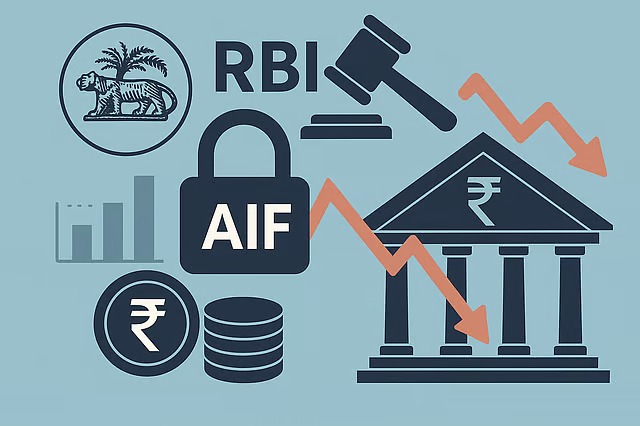
Follow WOWNEWS 24x7 on:

Introduction: A Strategic Reset in Alternative Investment Oversight
In a significant regulatory update, the Reserve Bank of India (RBI) has issued fresh guidelines governing how banks, NBFCs, and other regulated entities invest in Alternative Investment Funds (AIFs). Announced on July 29, 2025, and reported today, August 4, 2025, these directions—titled the RBI (Investment in AIF) Directions, 2025—will come into effect from January 1, 2026. The move is aimed at curbing indirect exposure to stressed companies, enhancing risk management, and aligning with SEBI’s due diligence norms.
Key Highlights of the New Framework
- No single regulated entity (RE) can invest more than 10 percent of an AIF scheme’s total corpus
- Collective investment by all REs in a single AIF scheme capped at 20 percent
- Investments exceeding 5 percent in AIFs with downstream exposure to debtor companies (excluding equity instruments) require 100 percent provisioning
- Subordinated unit investments must be deducted from Tier-1 and Tier-2 capital
- Previous circulars from December 2023 and March 2024 have been repealed
Investment Caps and Risk Containment Measures
- The RBI has introduced a dual cap structure to prevent concentration risk
- Individual REs are now limited to 10 percent of an AIF’s corpus
- All REs combined cannot exceed 20 percent in any single AIF scheme
- These limits are designed to ensure wider participation and reduce systemic exposure
Provisioning Norms and Exposure Definitions
- If an RE invests more than 5 percent in an AIF that has non-equity exposure to its own debtor company, it must provision the full value of its share in that exposure
- The provisioning is capped at the RE’s direct exposure to the debtor company
- Subordinated units—lower priority instruments—must be fully deducted from capital funds
- The RBI defines a debtor company as one that received a loan or investment (excluding equity) from the RE in the past 12 months
Exemptions and Transitional Relief
- Investments approved under the 2016 Financial Services Master Directions are exempt from the new caps
- RBI retains the discretion to exempt specific AIFs in consultation with the government
- Regulated entities may adopt the new norms earlier based on internal policy
- Existing investments can continue under old rules or transition to the new framework
Industry Feedback and Regulatory Alignment
- The new guidelines reflect industry concerns over evergreening of loans via AIF structures
- SEBI’s updated due diligence norms have been incorporated to ensure uniformity
- Equity instruments—including CCPS and CCDs—are excluded from provisioning requirements
- The RBI aims to deter misuse of AIFs while supporting legitimate investment flows
Implications for Fund Managers and Financial Institutions
- Fund managers must recalibrate fundraising strategies ahead of the January 2026 deadline
- Banks and NBFCs will need to strengthen internal monitoring and compliance systems
- The guidelines offer clarity and predictability, which may improve investor confidence
- Analysts expect a shift toward equity-focused AIFs and diversified investor pools
Conclusion: A Measured Step Toward Financial Stability
The RBI’s new directions mark a pivotal shift in how regulated entities engage with AIFs. By tightening caps, clarifying exposure definitions, and aligning with SEBI norms, the central bank is reinforcing its commitment to transparency and systemic resilience. As the financial ecosystem adapts, these rules will serve as a cornerstone for responsible investment and risk governance.
Source: Fortune India






